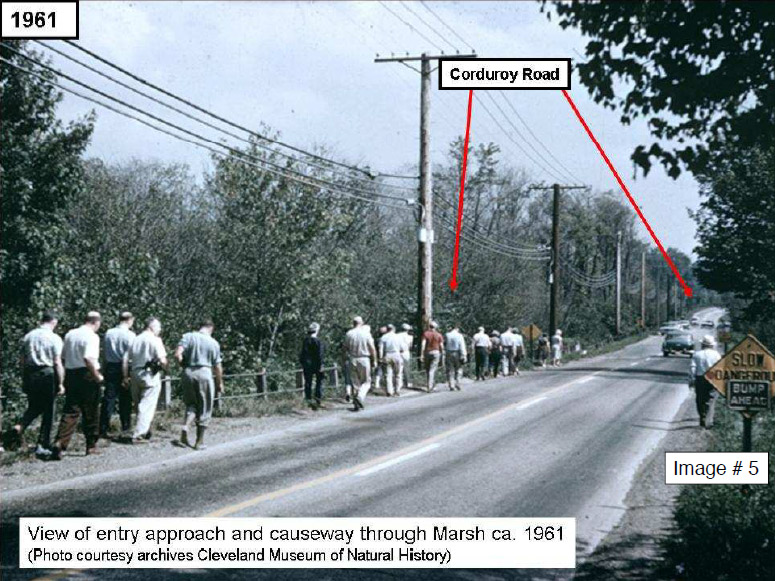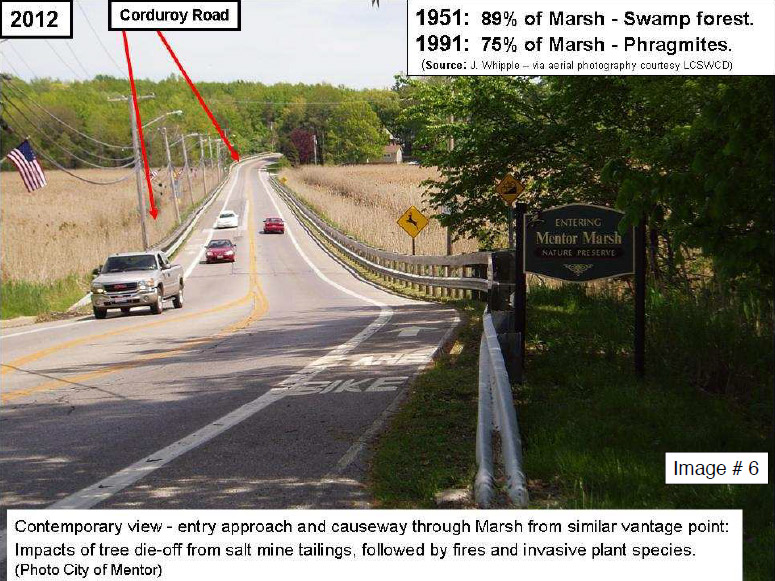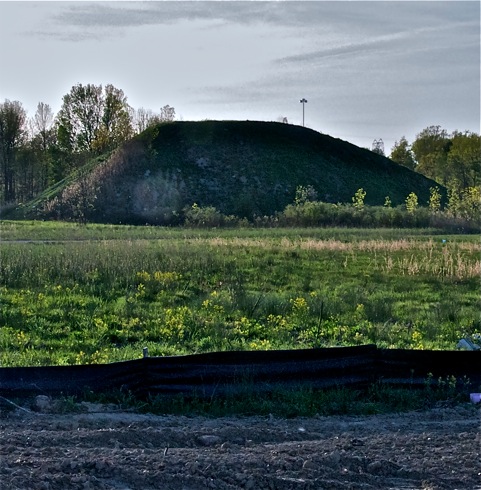By Carole Clement

Corduroy Road in the 1960s
The Mentor Marsh is a City of Mentor Nature Preserve, an important birding area, and a designated National Natural Landmark, portions of which are dedicated as a State of Ohio Nature Preserve. At least three studies document the sensitivity of the Marsh watershed to upstream activities. Even without the studies, a glance reveals the loss of the unique swamp forest and shrub swamp communities that covered more than 89% of the Mentor Marsh Basin prior to the 1966 dumping of 255,000 to 265,000 tons of low-grade salt ore into or near the mouth of Blackbrook Creek, land then owned by Osborne Concrete and Stone Company. At the time of the deposition of the salt fill, the Cleveland Natural History Museum urged the owner to use a better grade of culvert, but the developer did not demonstrate “good faith” in wetland protection.
The culvert failed, leaking sodium chloride and lime kiln waste downstream to the Mentor Marsh, turning it into hundreds of flourishing acres of the invasive species Phragmites australis.
Currently, Shamrock Business Center (SBC), Ltd., applied to the US Army Corps of Engineers to enter Phases 2 & 3 of their upstream development of Diamond Center. The proposal includes removing an additional 15 acres of wetlands from the site and mitigating the loss several miles south in the Grand River watershed. Additionally, it asks for authorization to maintain .74 acre of wetlands that was filled without permission.
The Mentor Marsh Board and its supporters requested and received a two-week extension of the commentary period from the USACE. The Board has further requests pending: that a public hearing be held, that wetland mitigation be on-site of the Shamrock property, that fines be levied against Shamrock for the .74 acre of wetland filled without EPA permission and be applied to Mentor Marsh mitigation, and that when granting changes to hydrology in one area, the USACE be sensitive to the impact of the changes on adjacent and downstream areas.
The USACE received a total of 270 comments regarding the developer’s plans; 230 of the responses requested a public hearing. Letters of support for the Marsh Board’s position came from both individuals and organizations, among which were the City of Mentor, the Cleveland Natural History Museum, the Northeast Ohio Sierra Club, the Ohio Wetlands Association, the Lake Erie Allegheny Partnership, Enviroscapes Landscape Design and the Ohio Environmental Council.
Special thanks to US Senator Sherrod Brown through whose efforts the Washington, DC Department of the Army, US Army Corps of Engineers supported the extension of the comment period “ . . . because of the high level of public interest demonstrated thus far.”

